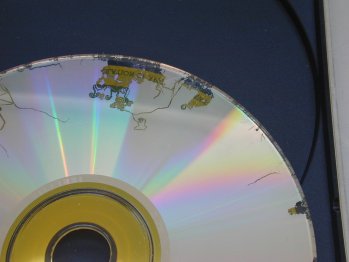I've lost a few cds already due to that. If I remember correctly (it was many years ago) the layer that the data is recorded on is made of an organic material and it can develop a bacterial infection. I've had CDRs that look like wood after the worms have gotten to it, little trails all over the surface, very cool patterns but no good for your data.Agree with @Ravynheart CD's and DVD's are chips cheap and relatively great, as long as they are stored correctly.
P.S. Always protect the TOP of your disc's!
If the top gets scratched, the data is useless...if the plastic gets scratched you can easily polish thousands of scratches out of the plastic
Another note: Keep an eye out for small "water-droplet" type spots that may occur.
They look like tiny round air bubbles or droplets but are in fact a living organism that eats the storage coating of discs
...and no I am not joking!!!
If you have 1 disc that gets this then immediately remove it from close quarters of any other discs or it will slowly spread through a whole spindle or CD-case of discs








